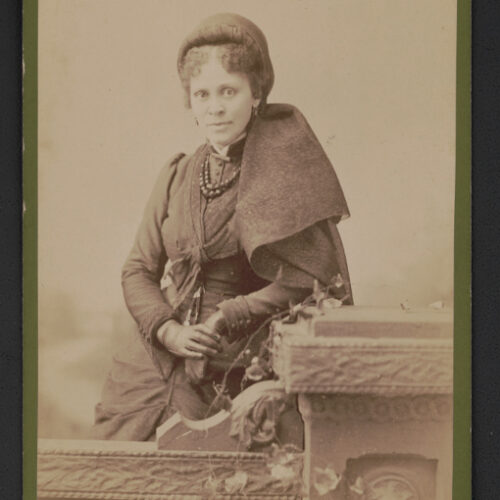Biography
Early Life
Hallie Quinn Brown was an influential educator, suffragist, and club leader. She also established a scholarship fund for Black youth that has lasted for over a century.
She was born to formerly enslaved parents Thomas and Frances Brown in Pittsburgh, Pennsylvania. She lived in Chatham, Ontario, Canada for much of her childhood. Then the family relocated to Wilberforce, Ohio to support her education.
As an African Methodist Episcopal (A.M.E.) college, Wilberforce University aligned with the values of morality and religion. She graduated from the university in 1873. Then, three years later, she graduated with honors from the Chautauqua Lecture School.
Brown’s endeavors eventually took her around the world, but she maintained her ties with Wilberforce University. She received honorary Masters and Doctorate degrees in 1890 and 1936.
Education Advocacy
Brown greatly valued education and chose to serve southern communities in Mississippi, South Carolina, and Florida during the Reconstruction era. She later reflected in her essay “Educational Awakening” that “There is nothing save religion and the worship of God that more nearly concern us, as a people, than education.”
She was appointed as the Dean of Women at the Alabama Tuskegee Institute before her European tour. She was in England from 1894 to 1899. There, she gave speeches to the British Women’s Temperance Union and the World’s Woman’s Christian Temperance Union. She also engaged with the Royal Family and was a member of the Royal Geographical Society.
As an African American woman, Brown used her platform with prominent leaders to advocate for temperance and bring awareness to African American social justice issues. When she returned from Europe, she was poised to lead the growth of the National Association of Women’s Clubs.
Women’s Club Leadership
Brown was an enthusiastic supporter of the women’s club movement that began in the late nineteenth century. She was instrumental in founding the Colored Woman’s League, which was a precursor to the National Association of Colored Women (NACW).
She saw the club movement as a moral force. In Our Women: Past, Present, and Future, she wrote “That there is but one moral standard. That women have the greatest virtue when they engage in the affairs of their country, of humanity, and of their God. That woman’s cause is man’s; they rise or sink together; dwarfed or Godlike, bond or free.”
She was elected President of the Ohio State Federation of Colored Women’s Clubs from 1905 to 1912. She was the President of the NACW from 1920 to 1924. She often signed her letters, “Christian love and sisterly forbearance.”
Even before her presidency, Brown made a major impact on the organization by establishing school funding opportunities for Black youth (later renamed the Hallie Q. Brown Scholarship Fund in her honor) and the Frederick Douglass Home preservation efforts.
Political Advocacy
As a professor of elocution at Wilberforce, Brown was experienced in giving impassioned speeches. This made her a powerful political advocate for organizations like the Ohio Council of Republican Women.
Her published work Bits and Odds: A Choice Selection of Recitations in 1880 also showcased her expertise in elocution and eloquent public speaking. Other publications like Homespun Heroines and Other Women of Distinction expressed her admiration for African American women’s history.
She wrote in a NACW newsletter that “Today we are building upon the labors of those who have gone before. Our duty is to carry forward the work entrusted to our care with unflagging interest and zeal.”
Brown lived to be almost 100 years old before her death in 1949. Her faith was ever-present throughout her life of service, teaching, and political advocacy. Hallie Quinn Brown’s leadership and writing continue to inspire women of faith around the world.

